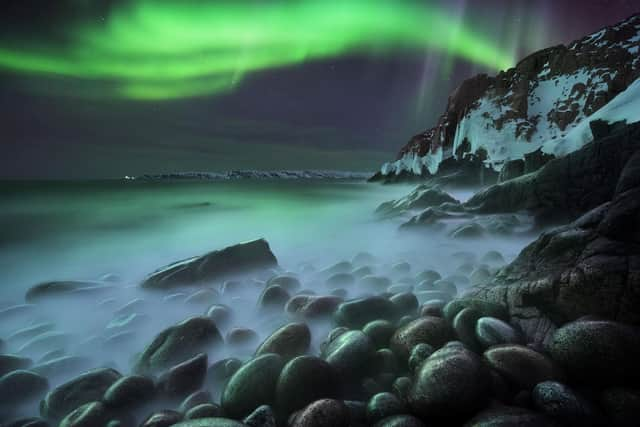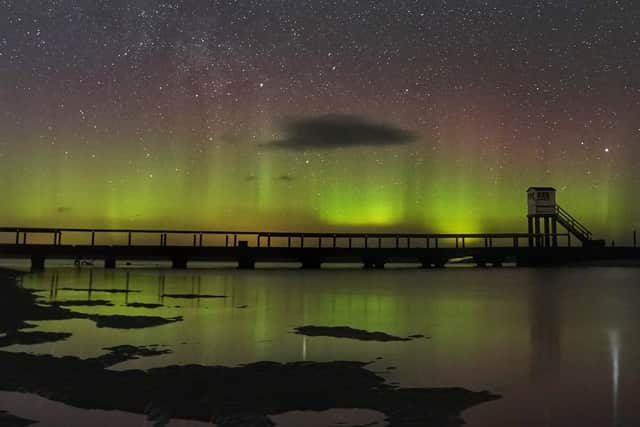Northern Lights tonight: will I be able to see the Aurora Borealis in Sheffield, forecast and what is a solar flare?
and live on Freeview channel 276
The night sky spectacle is caused by a Coronal Mass Ejection, a massive burst of material from the sun which can cause a phenomenon known as a geomagnetic storm, which interferes with the Earth’s magnetic field.
According to the US Space Weather Prediction Centre, the event could result in power grid fluctuations as well as “orientation irregularities” for spacecraft.
Advertisement
Hide AdAdvertisement
Hide AdSo much for the warnings, the question is will we be treated to a lights fantastic in Sheffield tonight, October 12? As we live in the north of the UK we could be in luck. While the storm is expected to have most effect on parts of the eastern seaboard of the United States, the Met Office has said there is a slight chance of moderate class flares here too.


The Met Office said: “Aurora is possible through 11th and 12th across much of Scotland, although cloud amounts are increasing, meaning sightings are unlikely for most.
“There is a slight chance of aurora reaching the far north of England and Northern Ireland tonight, but cloud breaks and therefore sightings are more likely in Northern Ireland.”
A geomagnetic storm is often called a solar storm and is a temporary disturbance of the Earth’s magnetosphere.
Advertisement
Hide AdAdvertisement
Hide AdThe flare - officially known as a coronal mass ejection was observed on October 9 on the side of the sun directly facing the Earth.


The US National Oceanic and Atmospheric Administration has put this week’s storm at category G2, which the agency defines as moderate in strength.
"Event analysis and model output suggest CME arrival around midday on 11 Oct, with lingering effects persisting into 12 Oct," it added, with midday in the US meaning late afternoon to early evening in the UK.
The largest solar storm ever recorded was the Carrington Event, which hit Earth in 1859 leaving an aurora visible even in latitudes much closer to the equator and knocking out telegraph systems all across Europe and North America.